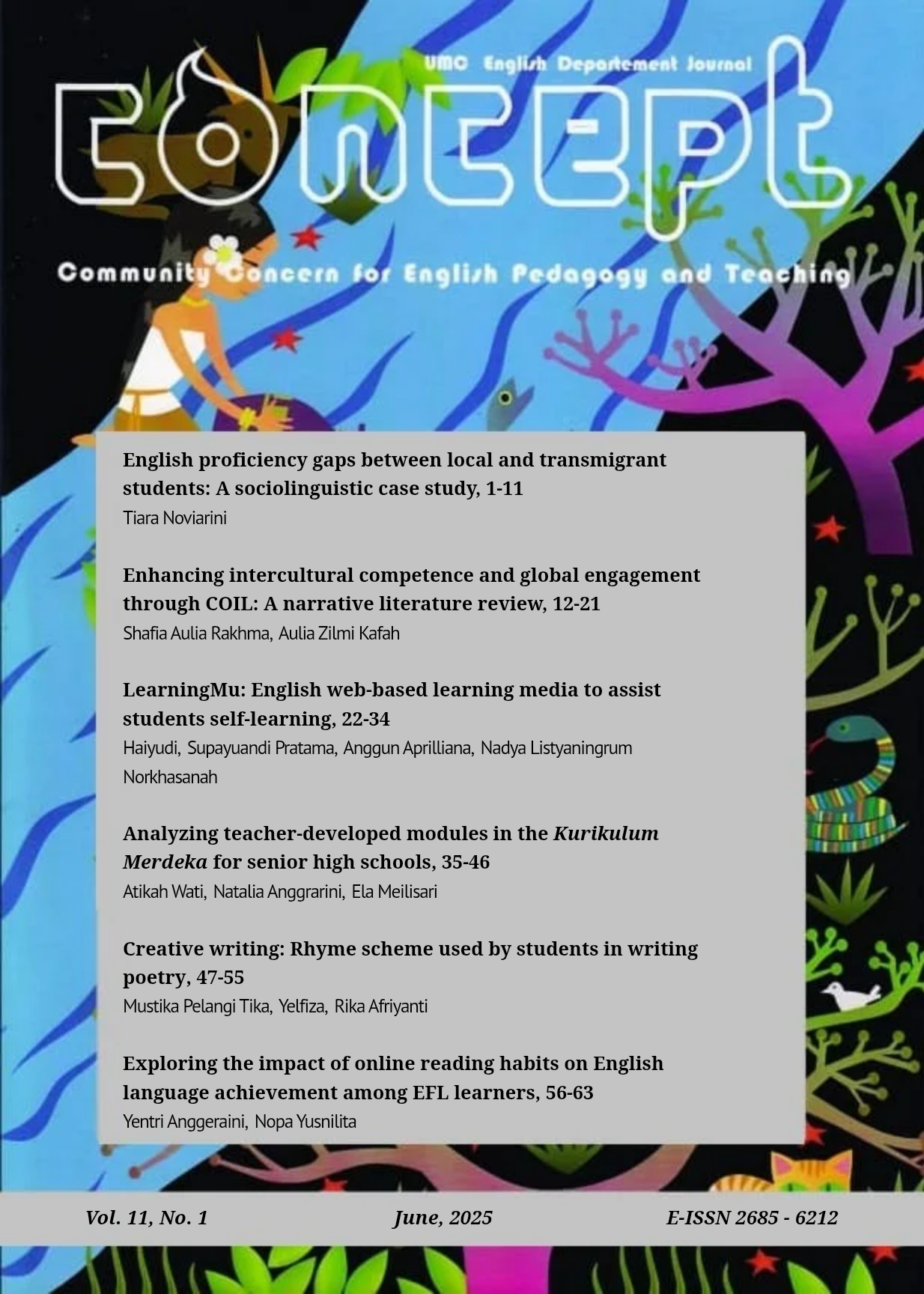English proficiency gaps between local and transmigrant students: A sociolinguistic case study
DOI:
https://doi.org/10.32534/jconcept.v11i1.7358Abstract
This study explores the disparity in English language proficiency between local and transmigrant students at STIES Mitra Karya Bekasi through a sociolinguistic lens. A qualitative case study approach was employed, utilizing in-depth interviews, participant observation, and document analysis to gather comprehensive data. The findings reveal that local students demonstrate stronger English language skills compared to their transmigrant counterparts. This gap is influenced by differences in educational backgrounds, unequal access to learning resources, and psychological factors such as self-confidence. To address these challenges, the study recommends several strategies, including supplementary language classes, peer tutoring programs, contextualized English instruction, public speaking training, and the implementation of inclusive institutional policies. These interventions aim to bridge the language gap and foster a more equitable and supportive academic environment for all students. The study highlights the urgent need for adaptive pedagogical approaches in multilingual and multicultural higher education settings. It contributes significantly to the fields of sociolinguistics and multicultural education policy by offering practical insights into promoting linguistic equity and inclusion in academic institutions.
Keywords: English language; proficiency gap; local students; transmigrant students; sociolinguistics; multicultural education







